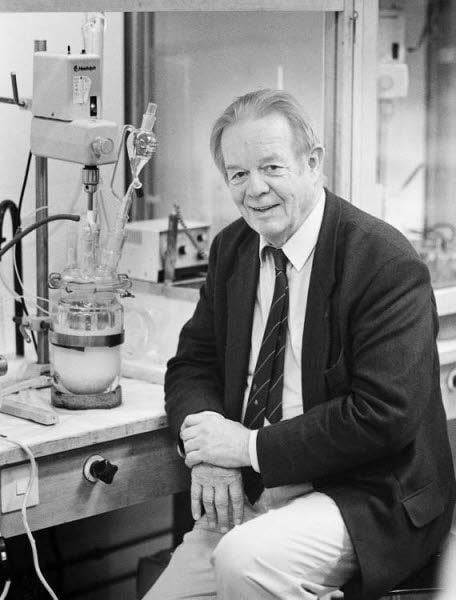
|
|
Professor John Ugelstad in his laboratory at Gløshaugen in Trondheim, where the first of the famous particles saw the light of day in 1978. Photo: SINTEF/Jens Søraa |
The reason for the headline in the well-known news magazine was that a Norwegian had created equally large microscopic particles of plastic in his laboratory. (Or rather, equally small; and perfectly spherical.)
The Americans had claimed that we would need to travel to the weightless environment of space to produce such particles. But Professor John Ugelstad (1921 – 1997) and his colleagues at NTNU and SINTEF managed to make them on Earth.
Global market
In the following years, the “Ugelstad spheres” become the foundations of a Norwegian industry with a global market.
SINTEF has played an important role in developing the spheres and how they were produced since the first Ugelstad spheres emerged in 1978.
The microscopic spheres can be divided into two groups:
- Magnetic: Substances that recognise particular types of cells or bacteria, for example, can be attached to their surface. The spheres, along with these additives, are used when we need to separate out particular types of cell, for example from blood samples.
Areas of application include cancer treatment, HIV research, tissue typing for transplants, DNA studies and the demonstration of special bacteria - including mapping routes of cholera contagion.
- Non-magnetic: These are used in laboratory process for the production and analyses of highly pure chemical compounds such as proteins.
Applications include ensuring that medicines are 100% pure. They are also used in the study of blood and urine samples, and as spacers in liquid crystal displays (flat-screens) in everything from PCs to sports stadium screens. The fact that the spheres are identical in size ensures that the screen images will be sharp.
Value creation and jobs
The spheres were industrialised in Norway by the Dyno Group (Dyno Particles). After the company was bought out, the spheres continued to be manufactured in Norway by the major US company Invitrogen,which is part of the Life Technologies Group.
By 2010, several hundred million kroner’s worth of “Ugelstad spheres” were being sold every year all over the world. In Norway, they have been responsible for creating hundreds of jobs.
Read more
